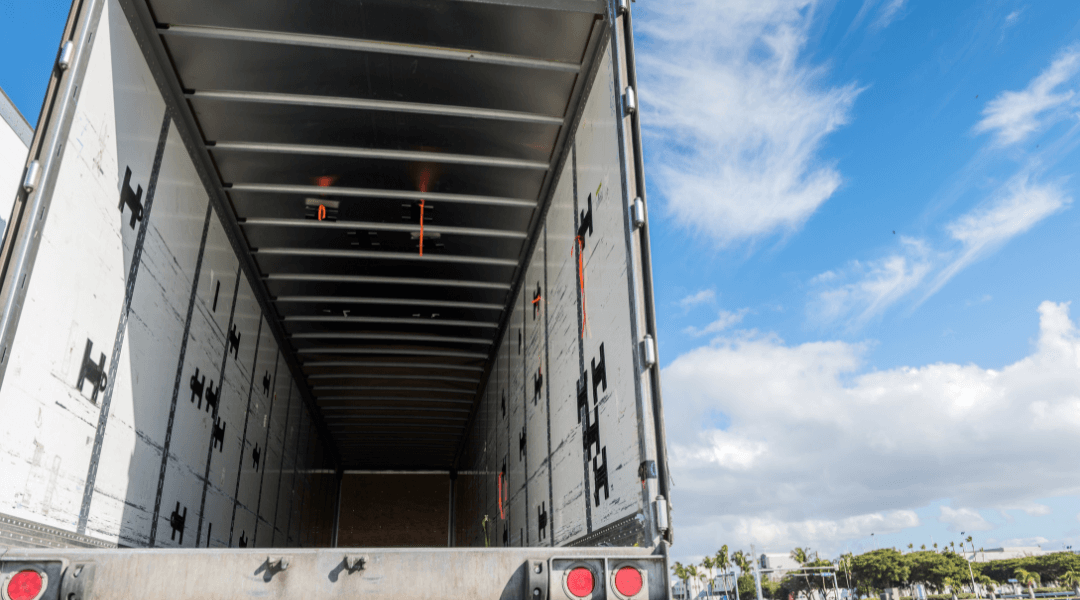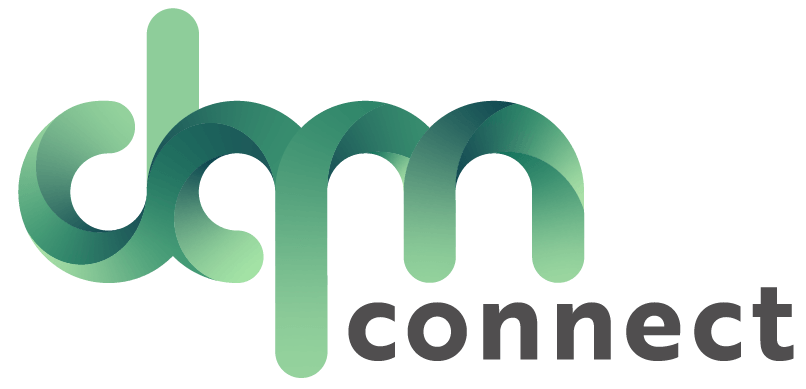
Fleet Management
Digital transformation and automation have emerged as game-changers in the transportation industry, redefining how fleet management companies operate. With advancements in technology, companies are beginning to leverage innovative fleet management software and automated safety solutions to enhance efficiency, safety, and overall performance. Our company, Vehicle Licensing Consultants (VLC), is at the forefront of this evolution, and we are proud to partner with industry leaders to provide cutting-edge solutions for trucking companies across the nation.
The Digital Transformation of Fleet Management
Fleet management has come a long way from the days of manual logbooks and paper-based systems. Today, digital transformation is the driving force behind the industry’s speedy evolution. Fleet management software has now become indispensable, offering comprehensive solutions for tracking, monitoring, and managing fleet operations. It’s these exact advanced systems that provide real-time data, predictive analytics, and perfect integration with various aspects of fleet management to help guarantee optimal performance and compliance.
Our Role in Embracing Digital Transformation Here at VLC
Vehicle Licensing Consultants (VLC) understands the importance of staying ahead in the digital age. Because we choose to partner with top-tier service providers, VLC makes certain that trucking companies have access to the latest technologies and tools to streamline their own operations. Let’s take a closer look at some of these key partners and how they contribute to the digital renaissance in fleet management:
TripDAWG – Simplifying Dispatch and Route Optimization
TripDAWG is a powerful tool that can simplify both dispatch and route optimization for your company. By integrating this solution, VLC enables trucking companies to plan efficient routes, reduce fuel consumption, enhance safety and improve delivery times. Fleet companies can leverage TripDAWG’s advanced algorithms to analyze traffic patterns, road conditions, and other variables to provide the best possible routes, ensuring timely deliveries and cost savings.
With TripDAWG and Geotab, you can leverage an ELD and telematics platform that goes beyond dispatch. With Geotab’s capabilities, you can leverage cameras, telematics data, maintenance programs, and more.
DQM Connect: Enhancing Driver Qualification Management
While it may be obvious that driver qualification management is crucial for maintaining safety and compliance in the trucking industry, many people don’t even know where to start with managing their files. DQM Connect offers a robust, yet user-friendly platform for managing driver records, certifications, and compliance requirements. In fact, VLC’s collaboration with DQM Connect makes sure that trucking companies can easily monitor and manage their drivers’ qualifications, reducing the risk of them being fined and pulled from the road for non-compliance, and enhancing their overall safety.
GW Connect: Streamlining Workflow Management
Efficiency in workflow management is another essential component for the smooth operation of any trucking company. GW Connect offers an ingenious solution for managing workflows, allowing you to track registration, maintenance, and other permit processes. By integrating GW Connect into our various offerings, we here at VLC help fleet management companies automate routine tasks, track progress in real-time, and enhance communication between different departments. This often leads to increased productivity and reduced operational costs.
Embrace Automated Safety with Drivewyze
Safety is paramount in the trucking industry, and automation obviously plays a very important role in enhancing it. Drivewyze, a leader in automated safety solutions, offers a suite of tools designed to improve road safety and compliance. VLC is able to leverage Drivewyze’s innovative technology, and provides trucking companies with real-time safety alerts, bypass notifications, and weigh station bypass services as well. This not only reduces downtime and operational costs, but also enhances morale and ensures that fleets remain compliant with safety regulations.
Digital Training with Luma Learning
Training and continuous education are vital for maintaining a skilled and knowledgeable workforce as well. Luma Learning offers a digital training platform that provides interactive and engaging training modules for drivers and fleet managers. By partnering with Luma Learning, VLC helps trucking companies have access to high-quality training resources that are essential for improving safety, compliance, and overall performance. This unique digital approach to training allows for flexibility and convenience, enabling drivers to learn at their own pace and stay updated with the latest industry standards at the same time.
The Future of Fleet Management
Though some may be slow to admit it, the future of fleet management lies in embracing digital transformation and automation. As technology continues to evolve, fleet management companies must stay agile and adaptable to remain competitive. VLC is committed each and every day to helping trucking companies navigate this digital landscape by providing access to and support for cutting-edge solutions from industry leaders like TripDAWG, Geotab, DQM Connect, GW Connect, Drivewyze, and Luma Learning.
Trust VLC to Take Your Company to the Next Level with Digital Transformation
By integrating all of these advanced tools and technologies at VLC, we help make sure that trucking companies can optimize their operations, enhance safety, and achieve greater efficiency. As the industry continues to evolve, VLC remains (and will remain) dedicated to supporting its clients in embracing digital transformation and automation, paving the way for a more innovative and efficient future in fleet management.
We are empowering trucking companies to harness the power of technology, so that they have the ability to remain at the forefront of the industry. Whether it’s through fleet management software, automated safety solutions, or digital training platforms, VLC is dedicated to driving progress and success in every area of the world of fleet management. Call us at (530) 637-1696 or email info@im4trux.com to learn more!

Fleet Management
Seasonal weather fluctuations have a significant impact on fleet operations, and the challenges brought about by the summer months are no exception. As temperatures soar and severe weather events such as heat waves and storms become more frequent, fleet managers are faced with a unique set of summer fleet maintenance challenges that can affect the efficiency, safety, and cost-effectiveness of their operations.
In this blog, our trusted professionals at Vehicle Licensing Consultants (VLC) will dive into the impact of seasonal weather on fleet operations, focusing on the specific challenges presented by summer weather conditions.
Heat Waves and Their Impact on Fleet Operations
During the summer, heat waves can exert a considerable toll on fleet operations. High temperatures can lead to an increased risk of vehicle breakdowns, especially in older or poorly maintained vehicles. The excessive heat places added strain on engines, cooling systems, and tires, making it imperative for fleet managers to prioritize preventive maintenance. Additionally, drivers may be at risk of heat-related illnesses, emphasizing the need for implementing summer fleet management measures to ensure driver well-being during sweltering conditions.
Storms and Their Disruption of Fleet Activities
Summer storms, including thunderstorms, heavy rainfall, and even hurricanes in some regions, pose a significant threat to fleet operations. These weather events can lead to road closures, flooding, and hazardous driving conditions, all of which can disrupt delivery schedules and compromise driver safety. Mitigating the impact of these disruptions requires careful summer fleet maintenance planning, real-time monitoring, and effective communication with drivers to ensure their safety and the timely completion of deliveries.
Challenges in Summer Fleet Maintenance – Efficiency and Performance
Another critical aspect affected by summer weather is the overall efficiency and performance of fleet operations. Extreme temperatures can impact fuel consumption, tire wear, and engine performance, influencing the operational costs and reliability of the fleet. In addition, the management of perishable goods and sensitive cargo becomes more challenging during hot weather, necessitating careful monitoring and adjustments to minimize potential losses.
Utilizing Technology to Counter Weather-Related Challenges
In the face of these weather-related challenges, technology plays a vital role in helping fleet managers navigate the impact of summer weather on operations. The vehicle tracking system from our TripDAWG department provides real-time GPS fleet tracking capabilities that enable managers to monitor their vehicles’ locations, assess weather conditions along their routes, and make informed decisions to ensure driver safety and on-time deliveries.
Advanced weather forecasting tools and telematics solutions provide valuable insights that aid in proactive planning and mitigation of weather-related risks.
Strategies for Mitigating the Impact of Summer Weather
To proactively address the challenges brought about by summer weather on fleet operations, fleet managers can implement several summer feet management strategies. These include developing comprehensive contingency plans for severe weather events, conducting thorough vehicle inspections and preventive maintenance to ensure fleets are well-equipped to handle high temperatures, and equipping drivers with the knowledge and resources to navigate weather-related hazards.
Our partners at Drivewyze offer a great alert system to help notify drivers of upcoming weather and may be able to reroute them to a safer and more accessible route. By leveraging data-driven insights from fleet management software and telematics, fleet managers can optimize routes and increase operational resilience.
Call us Today for Help with Summer Fleet Maintenance
The summer months demand vigilant attention to fleet maintenance to make sure that your trucks remain reliable and efficient. By following these summer fleet maintenance tips you can effectively prepare your fleet for the challenges brought about by the heat. Proactive maintenance and strategic utilization of technology will not only minimize the impact of summer-related issues but also contribute to the overall success of your fleet operations.
Whether you run a trucking company or are searching for a “fleet company near me,” you can contact Vehicle Licensing Consultants (VLC) today at (530) 637-1696 or email info@im4trux.com to learn more about how we can help you navigate the road ahead with confidence and peace of mind.

DOT Compliance, Fleet Management
As the world becomes increasingly interconnected, entire industries are continually seeking innovative solutions that streamline processes and enhance worker safety. When it comes to transportation and logistics, technological advancements from the past several years have played an important role in enhancing both safety and efficiency. At Vehicle Licensing Consultants (VLC), we embrace these enhancements through our partnership with Drivewyze, a leading provider of connected truck services. Together, we are revolutionizing work zone awareness for fleet companies across the nation.
Drivewyze Empowers Safe and Efficient Trucking Companies
Drivewyze is a cutting-edge online platform that leverages technology to improve safety and procedural efficiency for commercial truck drivers. It provides weigh station bypass and safety notifications to trucking fleets, enabling them to optimize routes and minimize downtime. Drivewyze utilizes GPS and cellular technology, and integrates easily with existing onboard systems so that drivers can have access to providing real-time insights and alerts.
Enjoy Enhanced Work Zone Awareness
On-road work zones pose unique challenges for drivers, especially those operating large vehicles. Drivers need to have a heightened sense of awareness and make sure to adhere to safety protocols at all times when in work zones for the safety of other motorists, the on-road workers, and the drivers themselves.
At VLC, we recognize the importance of work zone safety. That’s why we partner with Drivewyze to integrate their services with ours. This has allowed us to offer a truly comprehensive solution for trucking companies nationwide.
During National Work Zone Awareness Week and all year round, VLC and Drivewyze are committed to promoting safer driving practices within work zones. Through our partnership with Drivewyze’s platform, truck drivers receive timely notifications about approaching work zones, including information about reduced speed limits and specific, location-based regulations. These alerts are part of the driver’s regular notifications, so that they can remain informed at all times.
Drivewyze Key Features and Benefits
Real-time Notifications: Drivewyze provides truck drivers with real-time notifications about upcoming work zones, which allows them to adjust their speed and behavior accordingly.
Enhanced Compliance: By integrating Drivewyze’s platform, VLC enables trucking companies to increase compliance with work zone speed limits and regulations, which thereby reduces the risk of accidents and fines.
Streamlined Operations: With Drivewyze, trucking fleets can optimize routes and minimize delays, ultimately improving their efficiency and reducing their operational costs.
Improved Safety: By promoting work zone awareness, we at VLC and Drivewyze are contributing to safer roads for both drivers and construction workers.
At VLC, we are proud that our innovative partnership with Drivewyze is increasing the safety of drivers and workers. When your trucking company chooses to utilize Drivewyze’s advanced platform with VLC’s expertise, you can increase work zone awareness for your drivers, see improved safety, and likely avoid costly accidents. Call at VLC today at (530) 637-1696 or email info@im4trux.com to see how we can help you make your trucking company even better!

Fleet Management, VLC
The Department of Transportation (DOT) has been actively funding parking projects across various states to address the issue of truck parking shortages, with a notable focus on California. These DOT-funded initiatives aim to alleviate the challenges faced by truck drivers, enhance safety on highways, and bolster the efficiency of freight transportation across the roadways. As a state-of-the-art company dedicated to optimizing logistics operations, Vehicle Licensing Consultants (VLC) is following the progress of these endeavors and their implications for the industry.
California Department of Transportation (Caltrans) Takes the Lead for DOT-Funded Initiatives
Because it is a pivotal hub for freight movement, California has been at the forefront of implementing innovative solutions to mitigate truck parking issues across the country. With support from the DOT, the California Department of Transportation (Caltrans) has embarked on several different trucking parking projects aimed at enhancing facilities and expanding capacity.
One such project is the development of additional truck parking spaces along major highways and rest areas. By strategically identifying the high-traffic areas and collaborating with different stakeholders, Caltrans aims to provide more safe and accessible parking options for truckers, thereby reducing the incidence of illegal parking and the associated safety hazards that come with it.
Additionally, Caltrans is investing in technology-driven solutions to improve parking management and enhance the overall driver experience. This includes the implementation of real-time parking availability systems, reservation platforms, and even mobile applications, enabling truck drivers to locate and reserve parking spaces in advance. This not only reduces stress and logistical challenges for everyone involved, but helps to optimize truck drivers’ routes and minimize potential downtime.
DOT-Funded Parking Initiatives Beyond California
While California remains a focal point for parking projects, DOT- funded initiatives extend beyond the Golden State, encompassing various regions who are currently dealing with similar challenges. The Biden-Harris Administration has recently allocated nearly $4 billion to support 14 major transit construction projects that span the United States to make transit smoother and more efficient and parking safer for truck drivers. For instance, states such as Texas, Florida, and Illinois have received funding to support the development of truck parking infrastructure and associated amenities.
In Texas, the DOT has allocated funds for the expansion and enhancement of truck parking facilities along key freight routes. Likewise, Florida has prioritized the improvement of truck parking along its interstate highways, leveraging DOT funding to implement innovative solutions such as solar-powered rest areas and electrified parking spaces. Finally, in Illinois, the DOT has collaborated with local authorities to revitalize truck stops and rest areas, increasing safety and convenience for truck drivers traversing the state’s extensive highway network.
By investing in these new parking areas and upgrading the existing ones with advanced security features and certain amenities, these changes will reduce fatigue and stress on the roadway and make transportation safer and easier for all involved.
VLC Supports Trucking Efficiency Through Strategic Consultation
As trucking consultants, Vehicle Licensing Consultants (VLC) recognizes the incredible importance of efficient parking infrastructure in optimizing logistics operations and ensuring the safety and well-being of truck drivers. Through strategic consultation and collaboration with industry stakeholders, we are committed to staying up to date on initiatives that may affect truck parking facilities, streamline operations, and drive overall efficiency within the freight transportation sector.
By leveraging our expertise in regulatory compliance and operational optimization, our team at VLC aims to empower trucking companies to navigate challenges effectively, maximize resource utilization, and capitalize on emerging opportunities in the evolving landscape of freight transportation.
At VLC, our teams at DQM Connect, GW Connect, and TripDAWG are ready to help streamline your fleet management. Our DQM Connect software has the power to automate your driver files and management systems while GW Connect will help you get a strong handle on your fleet’s credentials. Finally, TripDAWG provides complete telematics solutions to make keeping track of your fleet easy.
The Future of Logistics
The DOT’s funding support for parking projects across multiple states, including California, underscores a concerted effort to address the pressing needs of the trucking industry. Through strategic investments in infrastructure, technology, and collaboration, these initiatives hold the promise of enhancing efficiency and safety within the freight transportation ecosystem, ultimately benefiting stakeholders across the supply chain.
As advocates for operational excellence, VLC remains committed to supporting the industry in navigating these transformative developments and unlocking new avenues for growth and success for our clients.
To stay in the know of developing parking projects, or to learn more about VLC, contact us today by calling (530) 637-1696 or by emailing info@im4trux.com.

Fleet Management, Telematics
Responsible fleet companies are always seeking innovative ways to enhance efficiency, reduce costs, and optimize their operations. Over the past decade, embracing technology has become paramount in order to reach these goals, and telematics solutions, especially fleet vehicle GPS tracking systems, have emerged as indispensable tools for successful fleet management. At Vehicle Licensing Consultants, we want to help educate our community by outlining a step-by-step process that fleet companies can follow to acquire a top-notch telematics solution, ultimately transforming their fleet operations and maximizing productivity.
Step 1: Identify Specific Needs and Objectives
The first crucial step is for the company to clearly define their needs and objectives concerning telematics in vehicles. It’s smart to conduct an internal assessment to determine the key pain points and areas for improvement. Common objectives may include real-time tracking, fuel efficiency monitoring, driver behavior analysis, route optimization, and maintenance scheduling.
Step 2: Research Telematics Providers
Once the company’s requirements are outlined, research reputable telematics solution providers in the market. Look for companies with a proven track record, positive customer reviews, and a comprehensive range of features to address your identified needs. Pay close attention to scalability and ease of integration with existing fleet management systems. At VLC we can help with this with product buying guides from companies such as Geotab.
Step 3: Compare Features and Customization Options
During the evaluation process, compare the features offered by different telematics providers. Look for core functionalities like real-time tracking, geofencing, driver performance monitoring, and customizable reporting. The ability to tailor the solution to the company’s unique needs is essential for maximizing the benefits of the telematics system.
Step 4: Consider Data Security and Compliance
Given the sensitive nature of fleet data, security should be a top priority for any fleet company. Make sure that the chosen telematics solution employs robust encryption, authentication protocols, and follows industry best practices for data protection. Additionally, consider whether the provider complies with relevant data privacy regulations to avoid potential legal pitfalls which we at VCL know is critically important.
Step 5: Request Demonstrations and Trials
Before committing to a telematics solution, request demonstrations from the and, if possible, trial periods to test the product’s usability and effectiveness. Engage relevant stakeholders, including both fleet managers and drivers, to gain insights into how the solution will fit into the company’s daily operations and receive feedback on ease of use.
Step 6: Review Costs and ROI
Analyze the pricing models of the shortlisted telematics providers. While cost is a significant factor, focus on the return on investment (ROI) the solution can offer. Consider long-term benefits such as fuel savings, reduced maintenance expenses, improved driver safety, and enhanced customer service to get a more comprehensive view.
Step 7: Seek Customer References
Request references from the telematics solution providers to gauge their level of customer satisfaction. It’s also not a bad idea to reach out to other fleet companies who are using the system to get honest feedback on its performance as well as on customer support and overall experience.
Step 8: Negotiate the Contract
After selecting the ideal telematics solution provider, negotiate contract terms that align with the company’s requirements. Pay attention to contract length, service-level agreements, upgrade options, and cancellation policies. At VLC we are happy to help with any questions or concerns you have and we support you through each step of the process.
Step 9: Implement and Train
Once the contract is finalized, work closely with the telematics provider to ensure a smooth implementation process. Train relevant personnel on how to use the system effectively and extract valuable insights from the data collected.
Connect with VLC About a Telematics Solution Today!
Incorporating a telematics solution into fleet management is a game-changer for modern businesses. By following these simple steps, modern fleet companies can confidently choose the right telematics solution that meets their specific needs, empowers efficient operations, and contributes to the overall success of their business. Give us a call at Vehicle Licensing Consultants at (530) 637-1696 or reach us by email at info@im4trux.com to learn more!

Fleet Management, FMSCA, VLC
Human trafficking is a global catastrophe that affects millions of lives every year. It is a heinous crime that preys upon the vulnerability of individuals, exploiting them for forced labor, sex work, or other forms of servitude. Recognizing the need to address this grave issue, the Federal Motor Carrier Safety Administration (FMCSA) in the United States has taken a proactive stance by launching an a-inclusive Human Trafficking Prevention Campaign. At Vehicle Licensing Consultants, we support the work of the FMCSA and applaud their efforts to combat human trafficking in the transportation industry.
Understanding the Serious and Widespread Issue of Human Trafficking
Before exploring the details of the campaign, it is essential to understand the magnitude of human trafficking. It is a secretive practice that operates across borders, exploiting victims from various backgrounds and age groups. The transportation sector, with its vast network and mobility, unfortunately becomes an easy tool for traffickers to move victims, often unnoticed. Realizing the unique role it can play in curbing this crime, the FMCSA has taken important steps to raise awareness, educate stakeholders, and enhance reporting mechanisms.
The FMCSA’s Human Trafficking Prevention Campaign
The FMCSA’s campaign encompasses several key initiatives and partnerships designed to combat human trafficking effectively. Some of the primary components include:
Education and Training for Industry Professionals
The FMCSA recognizes the importance of educating transportation industry professionals about the signs of human trafficking and how to report suspicious activities. Through its campaign, the FMCSA has developed training resources and materials to raise awareness among truck drivers, carriers, and other stakeholders. This educational component equips individuals with the necessary tools to identify potential trafficking situations and empowers them to take appropriate action.
Public and Private Partnerships
The fight against human trafficking requires a collaborative approach. The FMCSA actively engages with various stakeholders, including trucking associations, law enforcement agencies, and non-governmental organizations (NGOs), to build partnerships. By fostering these alliances, the campaign leverages collective efforts to effectively identify and prevent human trafficking incidents.
Outreach and Public Awareness Programs
The FMCSA’s campaign emphasizes the importance of outreach and awareness in order to combat human trafficking effectively. It actively participates in public events, conferences, and industry gatherings to engage with transportation professionals and the wider community. By spreading the message through various different channels, the campaign aims to reach as many individuals as possible, fostering a culture of vigilance and responsibility.
Simple Reporting Practices
To facilitate reporting of potential trafficking incidents, the FMCSA provides channels for individuals to share information securely. The agency encourages transportation professionals to utilize the National Human Trafficking Hotline (NHTH), a vital resource for reporting suspected cases and seeking assistance. By promoting a culture where reporting is normal and encouraged, the campaign strengthens the collective fight against human trafficking.
Regulatory Framework
In addition to awareness and education, the FMCSA works within its regulatory framework to address human trafficking. It collaborates with law enforcement agencies and supports initiatives aimed at strengthening laws, regulations, and penalties related to human trafficking within the transportation industry. This proactive approach ensures that traffickers face serious consequences for their actions.
Partnering Together to Prevent Human Trafficking
By supporting the Federal Motor Carrier Safety Administration’s Human Trafficking Prevention Campaign, we at VLC hope to serve as a leader in the transportation industry to combat human trafficking. By prioritizing education, awareness, partnerships, and reporting mechanisms, the campaign empowers transportation professionals to play a crucial role in identifying and preventing human trafficking incidents. Together, through collective efforts of the FMCSA, companies like VLC, and the support of drivers and the public, we can make a significant impact in the fight against this terrible crime, ensuring a safer and more compassionate future.
How Can VLC’s Driver Qualification Fleet Management Software Help the Transportation Industry?
At Vehicle Licensing Consultants we help transportation companies with driver compliance through driver qualification fleet management software and other tools. Driver compliance is one of the most important and overlooked spokes in the wheel of a successful fleet company and our driver qualification fleet management software is comprehensive, assisting your company with everything from keeping driver qualification records to preparing everything needed for a DOT audit. Our dedicated staff and inventive technology joins forces to enhance your driver compliance procedures and support you every step of the way as you grow your business.
If you are interested in learning more about VLC’s driver qualification fleet management software or our other helpful services, please don’t hesitate to give us a call at: 530-637-1696 or email us at info@im4trux.com.






